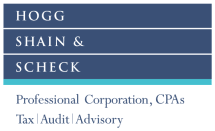Canada’s Changes to the Scientific Research and Experimental Development Program
Canada’s 2012 federal budget contained a number of changes to the Scientific Research and Experimental Development program (SR&ED). The majority of changes resulting from these measures are cuts in expenditure eligibility for all companies claiming SR&ED. Additional expenditure cuts apply to public and foreign- owned corporations.
What is the Impact Budget 2012 Changes to SR&ED:
Effective January 1, 2013 (regardless of year end)
- Investment Tax Credit (ITC) claim for contract payments is restricted to 80% of the cost to payer.
- Proxy method formula reduced to 60% from 65%.
Effective for year ends after December 31, 2013.
- For non-Canadian Controlled Private Corporations (CCPCs), ITC rate reduced to 15% from 20%.
- For CCPCs”rate reduction applies to expenditures in excess of $3 million (limit is lower if taxable income greater than $500,000 or taxable capital is greater than $10 million).
- The enhanced rate of 35% that applies to the expenses claimed up to the expenditure limit remains unchanged.
Effective January 1, 2014(regardless of year end)
- Proxy method formula reduced to 55% from 60%.
- Capital expenditures no longer part of SR&ED program.
- Lease payments for capital equipment no longer part of SR&ED program.
- Sub-contractor invoices must break out any capital component of charges.
Provincial Benefits
- Quebec boosted wage credit for bio-pharma sector
- Ontario introduced ORDTC (~ 2 years ago) and boosted multi-media tax credit.
Key policy documents:
1. T4088, Guide to T661.
2. Eligibility of work for SR&ED investment tax credit policy (replaces Information Circular 86-4R3).
- New policy omits doctrine of “slight advancement” and reinforces “advancement in knowledge”.
- New eligibility model hasd 5 criteria vs. 3 in the old policy:
- Scientific or technological advancement.
- Technologic uncertainty identified prior to start of project.
- Formation of Hypothesis.
- Scientific Method – including formulation, testing and revising hypothesis.
- Record keeping of hypothesis tested and results as the work progresses.
3. Interpretation Bulletin 151-R5, SR&ED expenditures.
Selected Planning Strategies:
- Accrue outgoing contract payments before end of 2012 (might be too late)
- Convert R&D contractors to employees
- Require contractors to break out capital component of their fees
- Consider using traditional instead of proxy overhead
- Convert to CCPC and safeguard the CCPC status
- Safeguard expenditure limits
- Assess capital equipment needs and purchase equipment by December 31, 2013 (note “available for use” rules in subsections 37(1.2), 248(19), 13(26)-13(31) of the Income Tax Act.
- Buy-out capital equipment leases extending beyond 2013 (acquired equipment is “new” not “used”)






